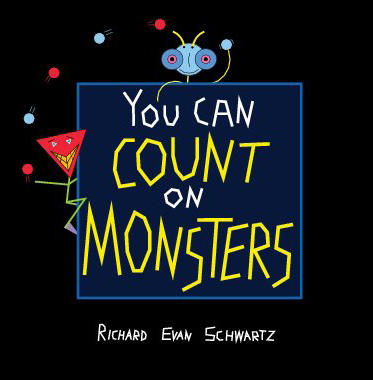Factoring fun: Counting with monsters
The author: About seven years ago, Schwartz made a simple book of black-and-white drawings of monsters -- each one associated with a number -- for his precocious daughter, then five, to help her learn about prime and composite numbers and factoring. A couple years later, he expanded the concept, eventually covering numbers 1 to 100 and making a poster of the fun monsters. "The National Science Foundation (main division) liked it so much that they have a giant one hanging in their office," he said. Last year, he turned the poster into a colorful book.
Math has been like a "constant companion" to Schwartz, today a mathematics professor at Brown University and a Guggenheim Fellow in 2003. One reason he likes math, he said, is "the fact that there is (usually) a way to decide if a mathematical statement or argument is true. So talking about math is much more productive for me that talking about lots of other subjects, like politics."
The book: Intended for elementary-age children, You Can Count on Monsters first explains the basic ideas of multiplication, prime and composite numbers, and factoring. Then for each number, from one through 100, the book's left-hand pages depict the number broken down into its prime factors using dots and factor trees, and on the facing page, there is a playful monster that relates to the number.
The monsters are designed to help children understand the building blocks of numbers. Each prime number is represented by a different monster. For example, the monster for the prime number 2 has two big eyes. For each composite number, the scene depicted involves the monsters for its prime factors. So the number 14, for instance, involves a scene with the monsters for the prime numbers 2 and 7. Young readers can have fun figuring out how the monster is related to its prime numbers.
 A page from the book: The monster for 14 (2x7) includes the monster for the prime number 2 and the monster for the prime number 7. Can you identify them?
A page from the book: The monster for 14 (2x7) includes the monster for the prime number 2 and the monster for the prime number 7. Can you identify them?
By Katherine Federici Greenwood
Read about more Princeton authors on The Weekly Blog and view a complete list of works by alumni, faculty, and students at PAW online.












No responses yet